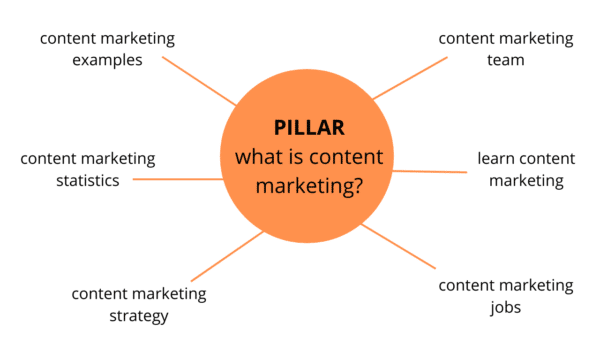Writing seo articles is one of the most important SEO factors that can make or break your website’s ranking.
Blogs are essential for keeping your site up-to-date and fresh. It’s also a good way to generate organic traffic through content marketing.
But how can you write great SEO articles that convert, rank well, and get you noticed by your target audience? More importantly, how can you do it quickly, so you can focus on other tasks and grow your business?
In this guide, we will show you the best tips and tricks on how to write SEO articles quickly, without sacrificing quality.
We’ve also included how to find high-quality content ideas, structure your posts effectively, use keywords strategically, and optimize your content for fast indexing.
But before we dive in, let’s first understand…
What Is SEO Article Writing & Why Is It Important?
SEO article writing is the process of applying search engine optimization techniques to your blog posts or website content to increase organic traffic, improve search visibility, and boost your ranking on SERPs.
Writing high-quality SEO articles is essential for capturing the attention of your target audience and driving more qualified traffic to your site. This is important because it can help you not only grow your business, but also improve brand visibility, generate more leads, and boost sales.
However, as important as quality is, quickly writing SEO articles is also essential. This can help you stay ahead of your content marketing efforts, and allow you to create more content in a shorter amount of time.
Writing SEO articles quickly can be challenging, as it requires an in-depth understanding of your target audience and the best ways to engage them. But with the right tools and techniques, you can create compelling content that ranks well in search engines and drives more traffic to your site.

With that said, here’s…
How To Write SEO Articles Quickly: The Best Tips and Tricks
There are many different tips and tricks you can use to write great SEO articles quickly. However, here are some of the most effective ones you certainly don’t want to miss out on:
Tip #1: Do Keyword Research in Bulk

Of course, before you begin writing SEO articles to your heart’s content, you need to do some keyword research. Knowing what your target audience likes and what topics they are searching for can help you craft the right content to engage them.
People will usually think of an interesting topic and then work on finding keywords for it. However, this can take time and make it difficult to write quickly.
One way to overcome this challenge is to do keyword research in bulk. Tools such as SEMrush or even Google’s own Keyword Planner can help you quickly find hundreds or even thousands of keyword ideas to work with.
The search volume and competition level for each keyword can also help you narrow down your list to the most relevant ones for your content.

We recommend:
In a spreadsheet, save all the potential keywords that you think might be interesting for your audience.
Then, go through them one by one and analyze the results that each keyword generates to determine if it’s a good fit for your content.
You don’t have to use everything, but this approach can help you quickly generate a large list of high-quality keyword ideas.
Tip #2 Create a Content Calendar

As they say, being organized is the key to success. And this is especially true when it comes to content marketing and SEO article writing.
Furthermore, having a clear schedule and plan for your content will not only help you stay on top of your blog posts, but also make it easier for you to quickly generate ideas, write drafts, and publish them in a timely manner.
Clustering your keywords is the process of grouping related keywords. You can then plan your content around certain clusters, as this will allow you to create content that’s more focused and relevant for your target audience.

Doing this will also make it easy to build links and do other types of promotion that will help you increase traffic and boost your ranking even faster.
Highlight your primary keywords and list down under them several secondary keywords that you can also include in your content.
For 2023 we highly recommend getting into Entity-based SEO and Semantic SEO as well. So besides the keywords, find all related entities to your topic and try to include those as well.

We recommend:
- Create a tracker: List down potential topics you’re going to write alongside the keywords you’ll be using for this topic, the estimated word count, how long it might take you to write the article, and what publication date you’re targeting.
- Consider which post should be written first: Certain articles might need to be published before others, such as resource posts with lists of links to your other articles, or pieces that complement another piece you’ve recently written. Keep track of your progress and adjust as needed.
Tip #3 : Use a Variety of Writing Tools

Every successful writer knows the importance of using different writing tools to improve their work. When it comes to SEO article writing, there are many great online and offline resources that will not only help you write articles fast, but also improve the quality of your work.
Some online writing tools that are worth checking out include Grammarly, for better grammar and spelling and the Hemingway App for improved readability and clarity. Google Scholar is another useful tool for researching and finding citations and references to support your ideas.
All these tools will help you to write more efficiently and create higher-quality pieces of content that engage your audience.
As a result, you’ll spend lesser time editing, rewriting, and proofreading your work.
Tip #4 Create Article Outlines

What better way to guarantee your article’s organization and structure are on point than to create an outline for it? (We do this for all our articles)
This will assist you in mapping out the flow of ideas and ensuring that you hit all the necessary points.
An outline should include the main topics and subtopics, as well as the points you want to cover for each heading. You can also add any links or other relevant resources that you might want to include in your article or reference in a bibliography at the end.
Tip #5 Start Creating a Draft

Now that you’ve established:
- Relevant keywords to add
- Your content calendar,
- Writing tools to use
- Article outline
It’s finally time to start writing a draft. This is where you’ll jot down your ideas on paper (or the screen), which will serve as the foundation for your article.
A timer or clock set to 30-minute intervals is a wonderful hack for tracking your time when drafting.
Doing this will help you determine how much work you’re doing and ensure that you don’t get stuck on a single section for too long.
Review what you’ve written so far for each interval and make any necessary edits or changes. When working on longer or more complex articles, editing in smaller chunks like this can be an efficient way to save time.

Finally, when you’ve finished writing the first draft of your article, be sure to let it sit for a while before going back and editing it.
Taking a break from the piece will help you come at it with fresh eyes and find ways to improve the content, tone, and style.
Here are some of the most commonly asked questions about fast content creation:
FAQs About Faster SEO Content
How long does it take to write SEO articles?
Articles of 1000 to 1500 words in length require at least 4 hours to research, write, and optimize.
However, the time it takes to write SEO articles varies depending on many factors, such as your writing speed, the complexity of your topic, and the tools you use.
Is 500 words enough for SEO?
There’s really no specific word count that is considered “enough” for SEO. Instead, the most important factor is the quality of your writing and how well it addresses the needs and interests of your target audience.
Still, we recommend writing at least 1,000 words for a standard blog post, around 2,000 words for long-form content, and 500 words for product posts or news.
This will help ensure that you cover all the relevant topics and provide enough information to engage your readers.
Is SEO writing difficult?
Yes, writing SEO can be a challenging task, as it requires knowledge of both the technical aspects of SEO and effective writing techniques.
However, with the right tools, research resources, and practice, you can learn how to write high-quality articles that rank well in search engines and provide value to your readers.
There’s never an easy or “right” way to write SEO, as it depends on your specific goals and the needs of your target audience. However, by following some basic tips and best practices, you can learn how to create well-optimized content that attracts more readers.
In a Nutshell
And now our journey has come to an end! This article has covered the basics of SEO writing, including what it is and how to get started.
To recap, some key tips for creating high-quality SEO content include using a content calendar, engaging writing tools, and creating an article outline.
Additionally, it’s important to start with a draft, take breaks when needed, and be prepared to make edits along the way.
We hope that this article has provided you with the information and guidance you need to start writing great SEO content!
So what are you waiting for? Grab a copy of your favorite writing tool, dive into some research resources, and start creating your own amazing pieces today!
If don’t feel like doing this on your own, don’t hesitate to contact us to get a quote on done for your content creation.




